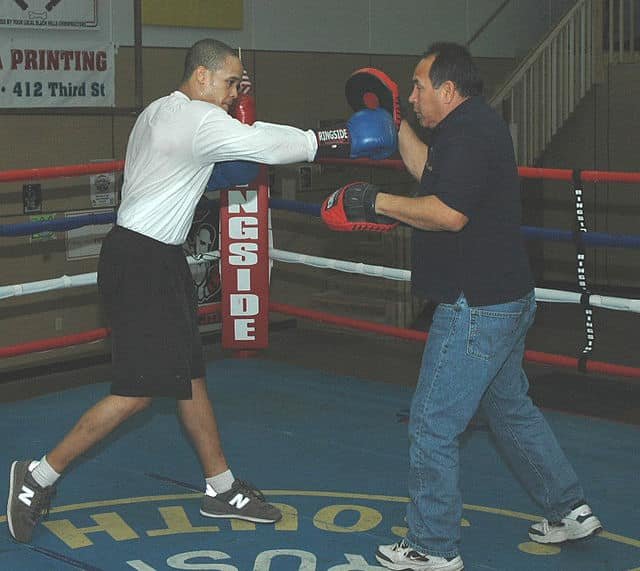Boxing is more than just throwing punches. It is about rhythm, timing, and precision. If you are new to the sport and looking to improve your technique, learning some simple boxing combinations for beginners is one of the best places to start.

These combos form the foundation of your offence and help you build confidence in the ring. Whether you are training for fitness or preparing for your first sparring session, these beginner friendly boxing combinations will give you a solid base.
Why Boxing Combinations Matter
Throwing a single punch may feel satisfying, but in a real fight or training session, it rarely does the job. Boxing combinations are essential from beginners to advanced fighters.
These keep your opponent guessing and allow you to create openings for powerful strikes. They also improve your footwork, defensive reflexes, and overall conditioning.

If you are still learning the basic punches, check out our guides to perfect the jab and master the cross.
Basic Boxing Punch Numbering
Most gyms and coaches use a simple numbering system to teach combinations. Here’s a quick breakdown for new beginners:
- 1 = Jab
- 2 = Cross
- 3 = Lead Hook
- 4 = Rear Hook
- 5 = Lead Uppercut
- 6 = Rear Uppercut

Combo 1: Jab – Cross (1 – 2)
This is the most classic and effective beginner boxing combination. The jab sets up the cross and helps you measure distance. Focus on snapping the jab out and following up quickly with a powerful cross.
Combo 2: Jab – Cross – Hook (1 – 2 – 3)
Adding a lead hook after your jab and cross makes this combo harder to defend against. The hook comes from the side and can catch your opponent off guard, especially if they are expecting only straight punches.
Tip: Rotate your hips and pivot your lead foot to generate power in the hook.
Combo 3: Cross – Hook – Cross (2 – 3 – 2)
This is a great offensive beginner boxing combination that starts with your power hand. It is useful when closing the distance or pressuring your opponent.
Make sure to reset your feet and maintain balance throughout the combo. Practicing this on the heavy bag will improve your control and flow.
Combo 4: Jab – Jab – Cross (1 – 1 – 2)
This double jab into a cross is excellent for disrupting your opponent’s rhythm. The first jab can be light and quick, while the second jab sets up the power cross.
This is especially effective in sparring or during real matches where feints and setups are key.

Combo 5: Jab – Cross – Lead Uppercut (1 – 2 – 5)
Uppercuts are often underused in beginner boxing combinations, but this combo brings them into play nicely. After landing the cross, the lead uppercut can slip under your opponent’s guard.
Use your legs to push up into the uppercut for maximum force.
Are you still looking for a good set of boxing gloves without breaking the bank? Take a look at our pick for beginner boxing gloves under £50!
Tips for Practicing Beginner Combinations
- Start Slow: Focus on clean technique before increasing speed.
- Shadowbox First: Visualize an opponent and practice your combos in front of a mirror.
- Use the Heavy Bag: Build timing and power on the bag.
- Work With a Partner or Coach: Pad work will help you learn when and how to use these combos effectively.

For more guidance, check out our article on How to Start Boxing Training at Home.
Final Thoughts on Beginner Boxing Combinations
Mastering these beginner boxing combinations will sharpen your skills and prepare you for more advanced techniques down the line. Remember, repetition and consistency are key. Start simple, stay focused, and keep practicing.

Ready for the next level? Explore our guide on Shadowboxing for Beginners to maximise your technique potential.
For a more extensive list, take a peek at Evolve MMAs guide on boxing combinations!



